Unexpected incidents … can jeopardize your results and will need decisive action. Taking a penalty is the easiest solution – hoping for the best and doing nothing is a risky strategy and likely to see you in the protest room. Ian Williams, in Yachting World.
Penalty turns shouldn’t be big emotional events. If you’re comfortable with this skill, you won’t be tempted to resist doing turns when required, and you’ll lose less distance completing them. In this post, we’ll pull together insights about executing penalty turns. We’ll discuss the rules regarding penalty turns in a separate article.
Strategies
Your goal is to limit the extra distance sailed and be heading in the right direction following the required turn(s). Having some predetermined strategies will help. Here are some options for various parts of the course. Diagrams show a one-turn penalty for simplicity.
Windward Mark
Sail to windward
If you have a clear lane and don’t have to sail too far to windward to get clear, this option doesn’t require much extra distance and leaves you heading toward the offset mark. Just make sure you sail upwind far enough to avoid other boats that are rounding.
Sail around the mark
If there is no offset mark, and not much traffic around the windward mark, this option minimizes your distance sailed. If you have to do two turns, it will be harder to avoid any traffic around the mark.
Reach past the offset
Andy Horton likes to reach past the offset mark if it is not too far away. This gives you speed and the best chance at keeping clear. However, you may risk being called out for delaying your turn. On the other hand, in 5 Tips: When, Why and How to Take a Penalty in a Yacht Race (Yachting World), top match racer Ian Williams points out that boats are rarely punished for pushing this rule slightly.
Leeward Mark
Sail to leeward
This gets you clear quickly, since traffic below the mark is normally minimal. Gybing first and then tacking leaves you heading on the right direction.
Gybe around the mark
This minimizes your distance sailed and leaves you heading in the right direction. However, as a one-turn penalty for hitting the mark, this option only works as shown if you gybe after hitting the mark. This option doesn’t work well for a two-turns penalty, unless there is very minimal traffic.
Reach off from the mark
This option may give you more space and clear air, perhaps at the expense of some extra distance.
On the Beat or Run
According to Fast Penalty Turns (Threewater Sailing Academy) and Faster Penalty Turns (Sailing World), tack first if you are sailing upwind and gybe first if you are sailing downwind. Here’s why:
- On the beat, tacking first will bring you slightly farther upwind. Also, if you start your circles with a tack, your tack will be at full speed. Coming out of that tack, your boat speed will be less than if you bore away, which means you won’t be sailing downwind as far before you jibe.
- On the run, jibing first will bring you slightly farther downwind. Also, your jibe will be at full speed, which makes it easier to accomplish.
Execution
Execution requires effort! Watch this video of Jon Emmett executing penalty turns in a laser.
Fast Penalty Turns (Threewater Sailing Academy) breaks down the steps in execution. Here are the key points:
- Aggressive sheeting. Use the sails to turn the boat. Trim the jib and let the mainsail out quickly to bear away. Trim the main quickly and the jib less quickly to head up.
- Roll and flatten the boat. Roll the boat to leeward to head up and initiate the tack. Hike hard to windward to help bear off and initiate the gybe. Move quickly from one side of the boat to the other.
- Keep your speed up to retain steerage. When doing two turns, you may need to accelerate briefly between the two circles.
- Ease the vang. This will help the turns and may also prevent a capsize.
- Outside board down. For scows, having the outside board down allows the boat to move through the circle and makes the circle tighter. Thanks to readers Mike Keenan and Ted Keller for pointing this out. Your author had it wrong in the original version of this post.
Practice Tips:
- Find a buoy and practice doing spins around it. Try to keep the boat close to the buoy to minimize distance sailed. See this Jon Emmett video for an example.
- 360 or 720 race. With several boats, set up a race course and run a race, with the requirement that the first boat to each mark must do a 360 or 720. This will simulate doing turns in a race.
Related Content:
Practice Rudderless Sailing to Improve Your Boat Speed (same principles apply to turning the boat while doing circles)
Sailors Helping Sailors
Will you share your knowledge with your related Comments below?


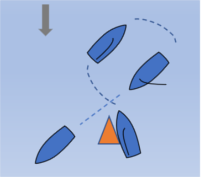
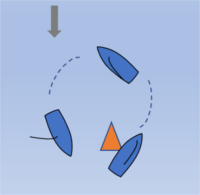

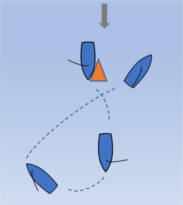
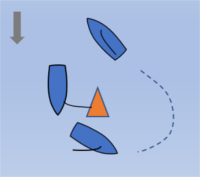
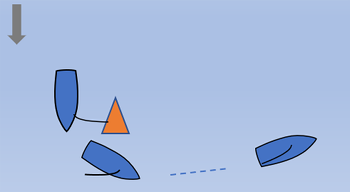

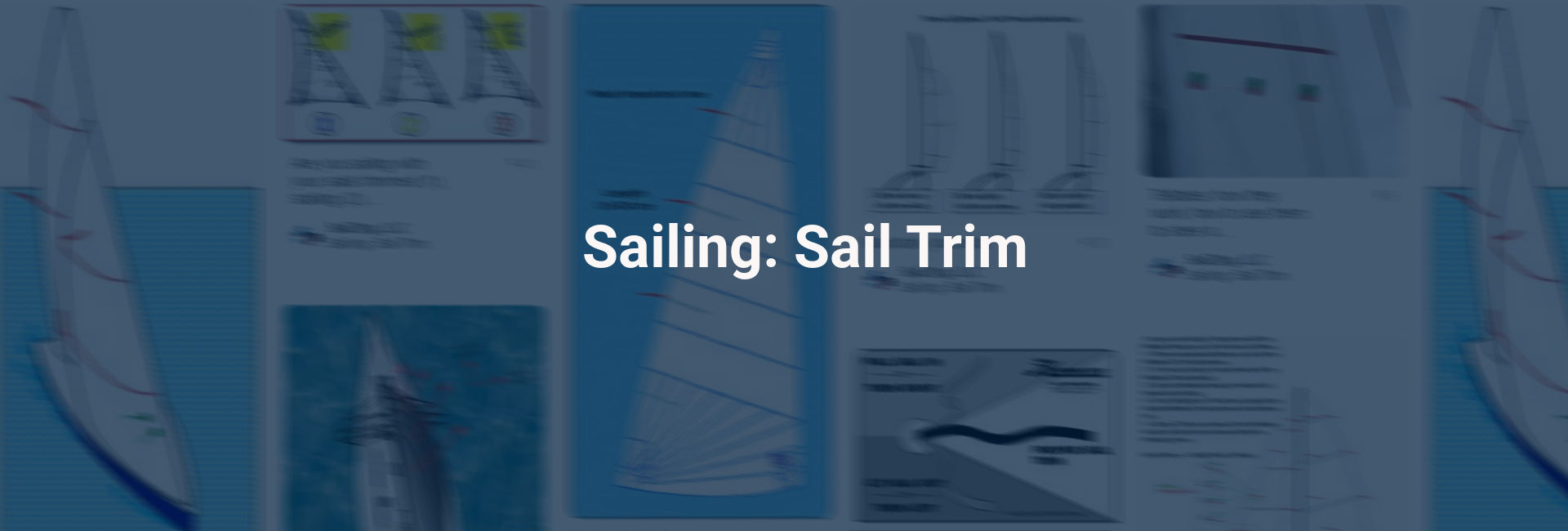
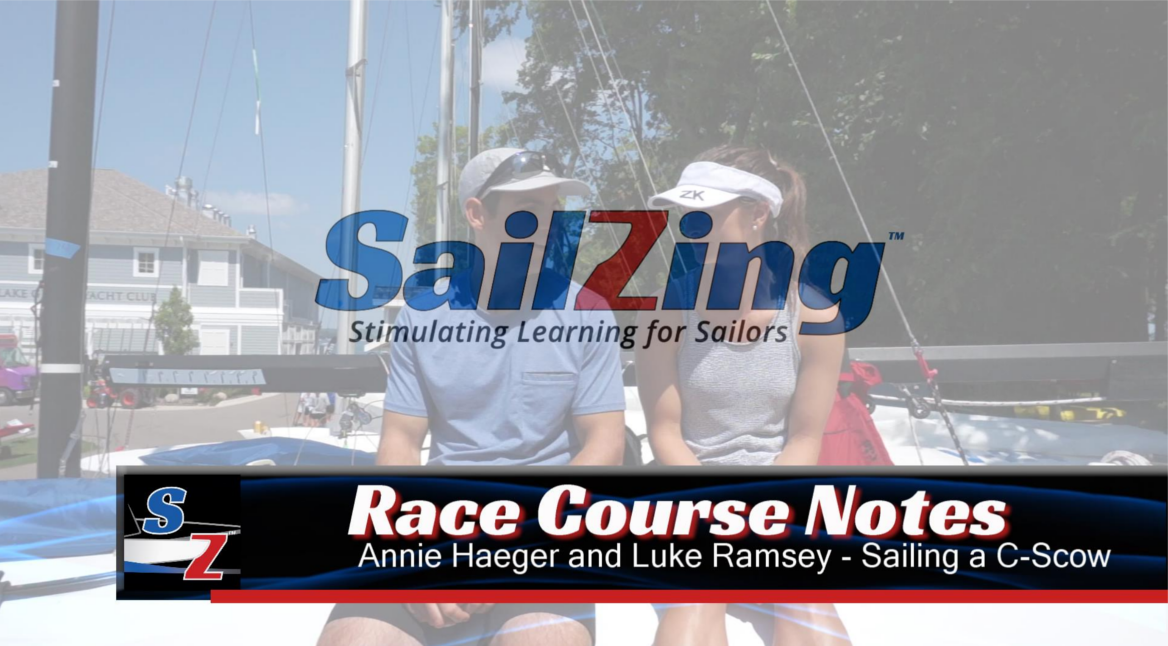

Here’s a reader comment on “both boards down.” In the article, we state that for scows having both boards down gives you bite as you change quickly from one tack to the other and back again. Another opinion is to put only the “outside board” down. The outside board is the one to the outside of the turn radius (e.g., starboard board if you’re turning clockwise). This makes it easier to make a tight circle, because a single board gives you a single point to spin around.
Regarding the two boards down topic, I’m fascinated by this and would love to delve further into it.
I thought that I had fouled someone (I actually may not have, but that’s another topic.). I was running on a starboard tack so I put only my starboard board down and jibed to port and turned counterclockwise. All good until I reached head to wind. Then, absent the port board, my tack stalled and I couldn’t finish the turn back to starboard and went into irons. 4-5 boats passed me. After the race, I practiced both two board and single board turns and I could execute very fast, fluid turns repeatedly with both boards, but struggled with one board.
1) I may just need to practice with one board more often to perfect it.
2) My turns are so fast with two boards, that I’m not sure that I gain much.
Thoughts?